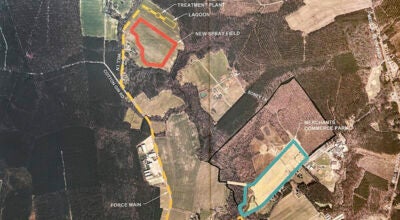Tale of distress is now a story of success
Published 3:40 pm Friday, September 3, 2021
|
Getting your Trinity Audio player ready...
|
AHOSKIE – Unfortunately, it’s easy to get mired in debt…the hard part is finding a path to financial recovery.
The Town of Ahoskie spent years battling money and governance issues, but local officials here rolled up their sleeves and made a dramatic turnaround.
As a result, the Local Government Commission (LGC) recently removed the town from a state list for government entities battling financial and governance challenges.
The Hertford County town of nearly 4,700 residents struggled for years, often scored at high and moderate risk for financial issues related to its general fund and water and sewer fund, and for lack of implementation of necessary internal controls to help manage its books. It had debt totaling more than $21 million in 2017. The situation landed the town on the LGC’s Unit Assistance List (UAL) for at-risk local governments.
“Ahoskie officials have engineered an amazing reversal from where they were the past few years, and we are particularly impressed with their determination to find out what’s right, get it right and keep it right,” said State Treasurer Dale R. Folwell, CPA, who chairs the LGC.
The commission is staffed by the Department of State Treasurer’s (DST) State and Local Government Finance Division (SLGFD).
When the LGC released its most recent UAL it no longer included the names of 38 units — 27 municipalities, eight counties and three utility districts.
“Like Ahoskie, these other units made such significant improvements that they were no longer included on the list,” Treasurer Folwell said. “We’re not certain whether that’s the highest number of local governments taken off the list at one time, but it is an extraordinarily high volume.”
“The Town of Ahoskie is thankful to the Local Government Commission for its technical assistance during this time,” said Town Manager Kerry McDuffie.
McDuffie went on to say that the town’s debt has been reduced from 21 accounts totaling $21.2 million in 2017 to 12 accounts totaling $17.8 million.
The Environmental Finance Center at UNC-Chapel Hill produced a short video about Ahoskie’s 26-point cost-cutting measures.
“Any local government that really wants to make a meaningful difference for its citizens can,” McDuffie stressed. “There are plenty of resources in North Carolina to help, which include the Local Government Commission, the North Carolina League of Municipalities, UNC School of Government, North Carolina Rural Water Association and other jurisdictions. If I can assist any other towns they are welcome to call me.”
McDuffie said the hardest part to fixing financial problems is getting everyone to agree that there is a problem.
“The Ahoskie Town Council was unanimous and adamant about improving the financial situation. That made improving the financial situation easy for me,” McDuffie said. “I appreciate the Ahoskie Council allowing me to be a part of improving the financial position of the town. It has been challenging, fun and exciting to work for a town that truly wants to operate as efficiently and effectively as possible for the citizens.”
“The Local Government Commission has a small staff that manages a very large and growing workload in monitoring the fiscal affairs of more than 1,100 local government units,” Folwell noted. “I am grateful for the valuable work they do day in and day out. The staff ensures local governments meet their statutory duties, and they provide the necessary guidance to help at-risk units resolve financial issues that surface.”
The North Carolina General Assembly established the LGC in 1931 to help address the problems in local government finance caused by the Great Depression. In 1933, 62 North Carolina counties, 152 cities and towns and some 200 special districts were in default on the principal, or the interest, or both of outstanding obligations.
As a direct result of that history, units of government in North Carolina must seek the commission’s approval before they can borrow money. In reviewing each proposed borrowing, the commission examines whether the amount being borrowed is adequate and reasonable for the projects and is an amount the unit can reasonably afford to repay. Because of this approach, the LGC has helped North Carolina maintain a stellar reputation for fiscal responsibility among states.
The State and Local Government Finance Division (SLGFD) staffs the LGC. It oversees the finances of all local governments and public authorities in North Carolina and manages the sale and delivery of most state and local debt. The entities subject to this oversight are a diverse group of over 1,100 municipalities, counties, boards of education, charter schools, public hospitals, utility districts, mental health agencies, housing authorities, universities, airport authorities and other public authorities.
This oversight includes ensuring that each unique entity is following industry best practices with regards to their financial operations; complying with the North Carolina Local Government (or School) Budget and Fiscal Control Act; following all governmental accounting standards as set by the national Governmental Accounting Standards Board; and ensuring that all debt is properly issued and serviced in accordance with debt agreements as approved by the Local Government Commission.
The SLGFD markets and sells bonded debt on behalf of issuing local governments and the state. The division also serves as staff to the state of North Carolina and the North Carolina Capital Facilities Finance Agency in fulfilling their respective statutory functions and responsibilities.


